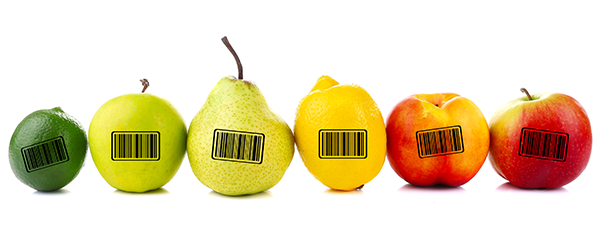Food safety is a growing concern among consumers and producers alike. In 2016, there were 764 food recalls in the U.S. and Canada—a startling 22% increase from the previous year. Putting it into further perspective, consider that 52% of recalls cost over $10M and 23% cost over $30M.
However, while financial losses may be recoverable, it is more difficult to regain consumer trust after a recall. The effects of a bad reputation associate with a food product and its producer can be long-lasting. This is especially true in cases when the responsible parties were unable to properly manage the incident. Consumers might not only avoid buying that particular product in the future, but they will also rule out commodities of the same variety or growing region.
That's why in recent years, the industry has enacted regulations to anticipate and limit food safety incidents.
GAP and FSMA Certification
Good Agricultural Practices (GAP) were developed to codify agricultural practices for a variety of commodities. Adoption of GAP allows producers, governments, and NGOs to enforce safety standards at the farm level that results in safe and quality agricultural products.
In relation, the Food Safety Modernization Act (FSMA) places emphasis on preventing rather than responding to contamination. Although prevention is not a novel concept in food safety, the law gives the Food & Drug Administration (FDA) the authority to implement more rigorous controls in food facilities.
As such, produce buyers now demand that growers pass the GAP audit and be FSMA-compliant. Both certifications require advanced traceability standards.
Traceability Aids in Risk Management
Through traceability, federal authorities can ensure public health by identifying unsafe products before they even hit the market. When planning for an emergency, traceability provides visibility into the complexity of the supply chain. High quality traceability records can track down fraudulent activities and restrict the entry of products from countries with lower safety standards. Furthermore, this advanced notice can help mitigate cases of food-borne illnesses caused by bacteria like E. coli, Listeria, and Salmonella.
When an incident does occur, traceability assists in the rapid response of all stakeholders. The transparency allows consumers to gain insight into the robustness of the system. Thus, the industry maintains their credibility.
In terms of prevention, traceability determines the root cause of a problem so it can't happen again. The data collected helps in identifying areas for improvement.
What Farms Can Do
Good farm record keeping goes a long way to facilitate better decision-making for agribusinesses. For instance, traceability records reduce the impact of a recall by limiting the scope to a specific day or field.
However, record keeping is time-consuming work that takes the focus away from other critical operational tasks. Fortunately, the farm management software Croptracker offers a traceability toolkit that automates processes and Improves risk management during incidents.
For maximum effectiveness, Croptracker follows the three pillars of traceability: premise identification, product identification, and movement recording.
Premise identification establishes the origins of inputs and links products to particular land locations or premises. At the same time, product identification assigns tracking identifiers to products like lot number or production date. With the first two pillars in place, movement recording would then be able to track products as they move from one location to another.
Therefore, in the event of a recall, it's much easier to not only protect the consumer, but also the reputation of the product and the brand.
Croptracker is an elegant software solution to sustainable supply chain management. It allows businesses to be industry compliant, operationally efficient, and domestically and globally competitive through traceability.


